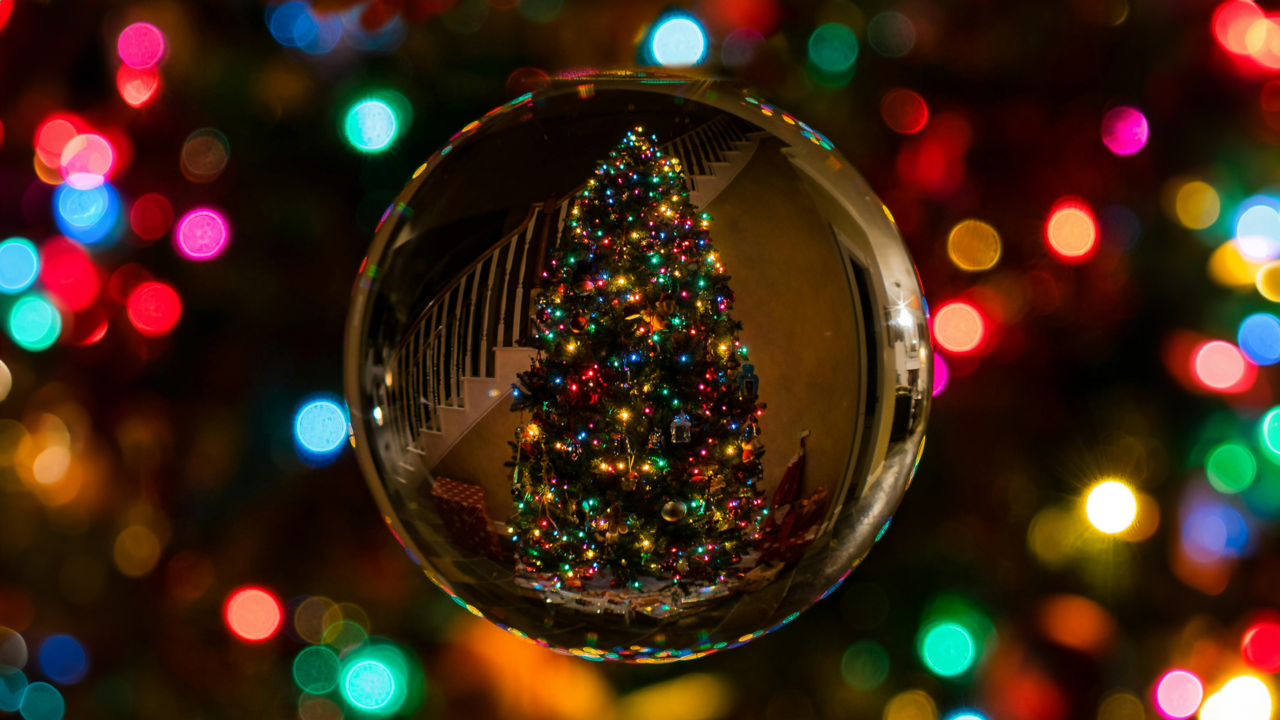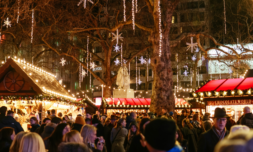It’s the festive debate to end all festive debates. But which tree really is better for the planet?
For decades, the debate over real versus artificial Christmas trees has been the festive equivalent of pineapple on pizza. It’s divisive, personal, and a little exhausting.
You might choose artificial trees for their convenience, cost-effectiveness, or the promise of a consistent aesthetic.
Or, you may insist a real tree, with its scent and imperfections, is the only way to honour Christmas tradition.
As the climate crisis demands more conscious consumer choices, this festive conundrum has taken on an environmental dimension. So – I hear you ask – is it really greener to cut down a real tree each year or invest in a fake one that lasts decades? Spoiler alert: it’s complicated.
Real Christmas trees seem like the eco-friendly winner at first glance. After all, they’re natural, biodegradable, and absorb carbon dioxide while growing. Christmas tree farms, which often replace felled trees with seedlings, can provide wildlife habitats, prevent soil erosion, and maintain green spaces.
But Christmas tree farming, like any monoculture, has an environmental cost. Trees are often treated with pesticides, herbicides, and fertilisers, which leach into soil and waterways.
Irrigation demands in drought-prone regions further strain water resources. Then there’s the carbon footprint of transporting millions of trees to cities worldwide.
The disposal of real trees raises another issue. While many municipalities offer composting or chipping services, millions of trees end up in landfills, where they release methane — a potent greenhouse gas — as they decompose.
Still, choosing a locally grown, organic Christmas tree and ensuring it’s responsibly disposed of remains one of the greener options. You could even consider a rental service, where trees are potted, returned after Christmas, and replanted. It’s the ultimate ‘reuse’ philosophy.
Then there’s artificial trees. They have one undeniable advantage: reusability. A single purchase could last you more than a decade, eliminating the faff of an annual shopping trip and saving you a decent amount of money in the long-run.
There’s also the clean-up. Artificial trees mean no needle sweeping and no watering, nor the depressing carcass of an orange, withered tree slumped outside your house for the first few weeks of the new year.
Yet convenience has its costs. Most artificial trees are made from polyvinyl chloride (PVC), a plastic derived from petroleum, with manufacturing processes that emit greenhouse gases and toxins.
Factories, primarily in China, churn out these trees in energy-intensive facilities, and shipping them globally racks up additional emissions.
Then there’s the end-of-life problem. Artificial trees are not biodegradable, nor are they recyclable in most cases. When they eventually break or fall out of favour, they’re destined for landfills, where they will outlast generations of your family’s Christmases.
From an environmental perspective, artificial trees start making sense only after repeated use. Experts suggest keeping your fake tree for at least 10 years to offset the emissions associated with its production and transport. If you’re buying one, look for options made from recycled or sustainably sourced materials.
So which is better? In all honesty, neither choice is perfect. he environmental impact of a Christmas tree depends on your individual circumstances and how you use or dispose of it.
Comment
byu/SustainableAvenger from discussion
insustainability
A real tree grown and composted locally has a significantly smaller footprint than an artificial tree used for just a few years and discarded. But if you plan to reuse an artificial tree for a decade or more, its impact becomes comparable to or even less than that of buying a new real tree annually.
The broader challenge lies not just in picking the ‘right’ tree but in reframing how we think about holiday consumption altogether. The ideal outcome would be embracing a less-is-more approach to decorations and gifting. But the reality of offsetting festive indulgences by supporting carbon-reducing initiatives seems a little far-fetched.
For those committed to a greener Christmas, there are creative alternatives. Some families are embracing living potted trees, which can be replanted outdoors or kept for subsequent years.
Others craft trees from recycled materials – a stack of books, driftwood, or even fallen branches can evoke holiday spirit without ecological guilt.
Ultimately, the most sustainable Christmas tree is one that aligns with thoughtful, intentional living. Whether real or artificial, your choice should reflect a commitment to reducing waste, prioritising quality over convenience, and celebrating the season with the planet in mind.
So when you’re picking out your tree this year, remember that it isn’t so much about which one you choose, but about how we embrace the festive season in a way that respects the planet.
In that vein, have a merry (and mindful) festive season. However you choose to celebrate.

















